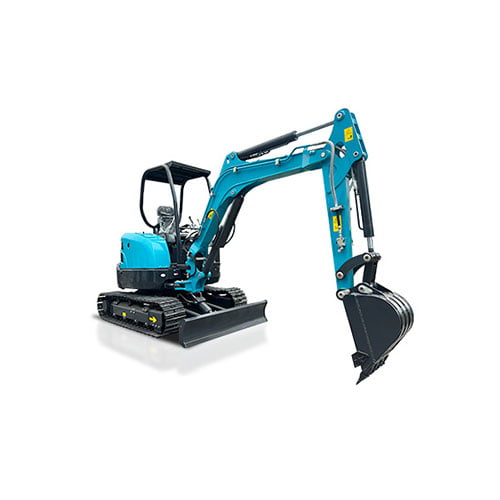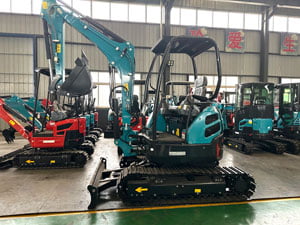Welcome to My Blog!
Before we dive into the content, I’d love for you to join me on my social media platforms where I share more insights, engage with the community, and post updates. Here’s how you can connect with me:
Facebook: https://www.facebook.com/profile.php?id=100072217509763
LinkedIn: https://www.linkedin.com/company/74949059/admin/dashboard/
YouTube:www.youtube.com/@tractormanufacturer-lc5qz,www.youtube.com/@excavatormanufacturers-sn9hk
TikTok: www.tiktok.com/@tractormanufacturer, www.tiktok.com/@excavatormanufacturers
Now, let’s get started on our journey together. I hope you find the content here insightful, engaging, and valuable.
Table of Contents
Introduction

Farming is a demanding job that requires efficiency, versatility, and the right tools to get the job done. One of the most important investments for any farmer in 2025 could be the tractor bucket. This simple yet powerful attachment can significantly enhance your farm’s productivity, making a wide range of tasks easier and more efficient. Whether you’re managing crops, handling feed, or moving soil, a tractor bucket offers undeniable advantages.
In this blog, we’ll explore why a tractor bucket could be the best decision for your farm, detailing its benefits, uses, and the factors to consider when choosing one. If you’re looking for ways to boost your farm’s efficiency in the coming year, read on to find out how this versatile attachment can help you get the most out of your tractor.
Versatility and Functionality
One of the standout features of a tractor bucket is its versatility. This tool can handle a wide range of tasks, from lifting heavy loads to transporting materials. Whether you need to move dirt, rocks, hay bales, or feed, the tractor bucket can make these tasks much easier and faster. With the ability to attach to various tractor models, it’s an investment that pays off across many different farming activities.
Uses
Here are some common tasks that can be done more efficiently with a tractor bucket:
- Soil Movement: Tractors with a bucket attachment are perfect for moving large quantities of soil, making them invaluable for tasks such as clearing fields, leveling uneven ground, or preparing land for planting. Whether you’re building up berms or filling in low spots, the powerful hydraulics of a tractor bucket can make light work of heavy soil movement, saving both time and effort.
- Material Transport: Tractor buckets are highly efficient for transporting bulk materials like feed, hay, mulch, and even gravel. They can easily carry large loads across varying distances, whether it’s moving feed to livestock or distributing mulch across garden beds. With the right attachment, a tractor bucket can also move compost, soil, and other materials commonly needed on farms or landscaping projects.
- Construction Work: When it comes to construction tasks, particularly on farms or rural properties, a tractor bucket is ideal for lifting and moving heavy construction materials. Whether you’re hauling concrete, steel beams, or wood for farm buildings, the bucket attachment allows you to load, transport, and unload with precision. This versatility makes it an essential tool for small-scale construction or renovation projects.
- Snow Removal: During the winter months, a tractor bucket proves to be an essential tool for clearing snow and ice from driveways, pathways, and farm roads. With the added weight and traction of a tractor, it can easily scoop up snow and clear large areas in less time compared to traditional snow removal equipment. Adding a snow blade or a specialized snow bucket can enhance its effectiveness in tackling icy conditions.
- Landscaping: Whether you’re reshaping a garden, building rock walls, or preparing areas for planting, a tractor bucket is a valuable asset for landscaping projects. It can be used to move large amounts of soil, gravel, mulch, or rocks to various parts of your property. With its ability to lift and transport materials with ease, the tractor bucket allows landscapers and homeowners to complete tasks efficiently and with minimal strain.
Why a Tractor Bucket Will Improve Farm Efficiency


Efficiency is a key factor in successful farming, and a tractor bucket can contribute significantly to improving your operations. Traditionally, farmers would use manual labor or smaller machines for tasks that required moving heavy materials. However, using a tractor with a bucket attachment allows you to complete these tasks in a fraction of the time and with much less physical effort.
Time-Saving Benefits
A tractor bucket saves time by allowing you to handle multiple tasks in one go. For example, if you need to transport soil from one part of your farm to another, the tractor bucket can scoop up large amounts at once, speeding up the process. What might have taken hours with a shovel or wheelbarrow can now be completed in minutes.
Reduced Physical Strain
Using a tractor bucket minimizes the physical strain on workers. The ergonomic design of modern tractors means that the operator can work for longer hours without tiring, while the tractor bucket handles the heavy lifting. This is particularly useful for larger farms where constant labor-intensive tasks are required.
Choosing the Right for Your Farm

Not all are created equal. When purchasing one for your farm, there are several factors to consider to ensure that you choose the right model for your specific needs.
Key Factors to Consider
- Bucket Size: The size of the tractor bucket determines the amount of material it can carry at once. Larger buckets are great for handling big loads, but they can also add weight to the tractor, which could affect maneuverability.
- Bucket Material: The material of the bucket plays a significant role in its durability. Steel and reinforced buckets are ideal for heavy-duty tasks like moving rocks or digging into tough soil.
- Compatibility: Make sure the tractor bucket is compatible with your specific tractor model. The size, weight capacity, and hitch type of the tractor should match the specifications of the bucket.
- Hydraulic vs. Mechanical Buckets: Hydraulic tractor buckets are more powerful and efficient but tend to be more expensive. Mechanical buckets require less maintenance and are suitable for lighter tasks.
| Tractor Bucket Model | Bucket Size (Cubic Yards) | Material | Recommended Tasks |
|---|---|---|---|
| Model A | 1.0 | Steel | Soil Transport, Heavy Lifting |
| Model B | 0.8 | Reinforced Steel | Landscaping, Material Handling |
| Model C | 1.5 | Aluminum | Snow Removal, Bulk Material |
| Model D | 2.0 | Steel & Alloy | Construction, Large Material |
Cost-Effectiveness and ROI
While purchasing a tractor bucket is an investment, it’s a cost-effective one in the long run. The savings in time, labor, and energy can be significant, especially when working on a large farm. A tractor bucket reduces the need for additional equipment or manual labor, which helps offset the initial purchase cost.
Long-Term Benefits
- Increased Productivity: By reducing the amount of time it takes to move materials or complete tasks, a tractor bucket boosts overall farm productivity.
- Lower Labor Costs: With a tractor bucket, fewer people are needed for heavy lifting tasks, which can lower your overall labor costs.
- Durability: Tractor buckets are designed to last, and many come with warranties to ensure that your investment is protected for years.
Conclusion
A bucket attachment could very well be the best investment for your farm in 2025. With its unmatched versatility, ability to boost efficiency, and potential for significant time and labor savings, this simple tool can truly transform your daily operations. Whether you’re clearing fields, moving soil, or hauling heavy materials, the bucket makes these tasks faster and easier, helping your farm run more smoothly and effectively.
Choosing a high-quality bucket isn’t just about convenience—it’s about enhancing the overall productivity of your farm. The right attachment allows your tractor to handle a wide range of tasks, ensuring that you have a reliable tool for everything from material transport to landscaping and construction. By investing in the right equipment, you’re ensuring your tractor remains a valuable asset for many years to come, optimizing the way you work and improving overall farm operations.
FAQ
What Is the Difference Between a Hydraulic and Mechanical Tractor Bucket?
A hydraulic bucket utilizes hydraulic power to lift and dump materials, providing enhanced strength and speed for demanding tasks. This added power makes it ideal for heavier loads and more efficient operation, but it comes with the trade-off of requiring more frequent maintenance due to its complex moving parts.
On the other hand, a mechanical bucket operates through the tractor’s lifting arms, offering greater durability and requiring less maintenance. With fewer moving parts, it tends to have a longer lifespan and is less prone to breakdowns. However, while it’s more reliable in terms of upkeep, it may not match the hydraulic version’s power and speed, making it less suited for handling extremely heavy or large loads.
How Do I Know the Right Size Tractor Bucket for My Needs?
The right size bucket depends on the size of your farm and the types of tasks you perform most often. Larger buckets are suitable for bigger jobs like moving soil and rocks, while smaller buckets are ideal for more delicate work or handling lighter materials.
Can I Attach a Tractor Bucket to Any Tractor?
No, the compatibility of the tractor bucket depends on the model and attachment type. Always check the specifications to ensure the bucket is compatible with your tractor’s size, weight capacity, and attachment system.
Are Tractor Buckets Expensive?
While the initial investment for a tractor bucket can be significant, the cost is justified by the time, labor, and effort saved in the long run. Prices vary depending on the size, material, and brand, with basic models starting around $1,000 and premium models reaching up to $3,000.
How Do I Maintain a Tractor Bucket?
To maintain a tractor bucket, regularly inspect it for damage, keep it clean, and ensure that the hydraulic or mechanical parts are lubricated and functioning properly. Also, ensure that it is properly stored when not in use to prevent wear and tear.




